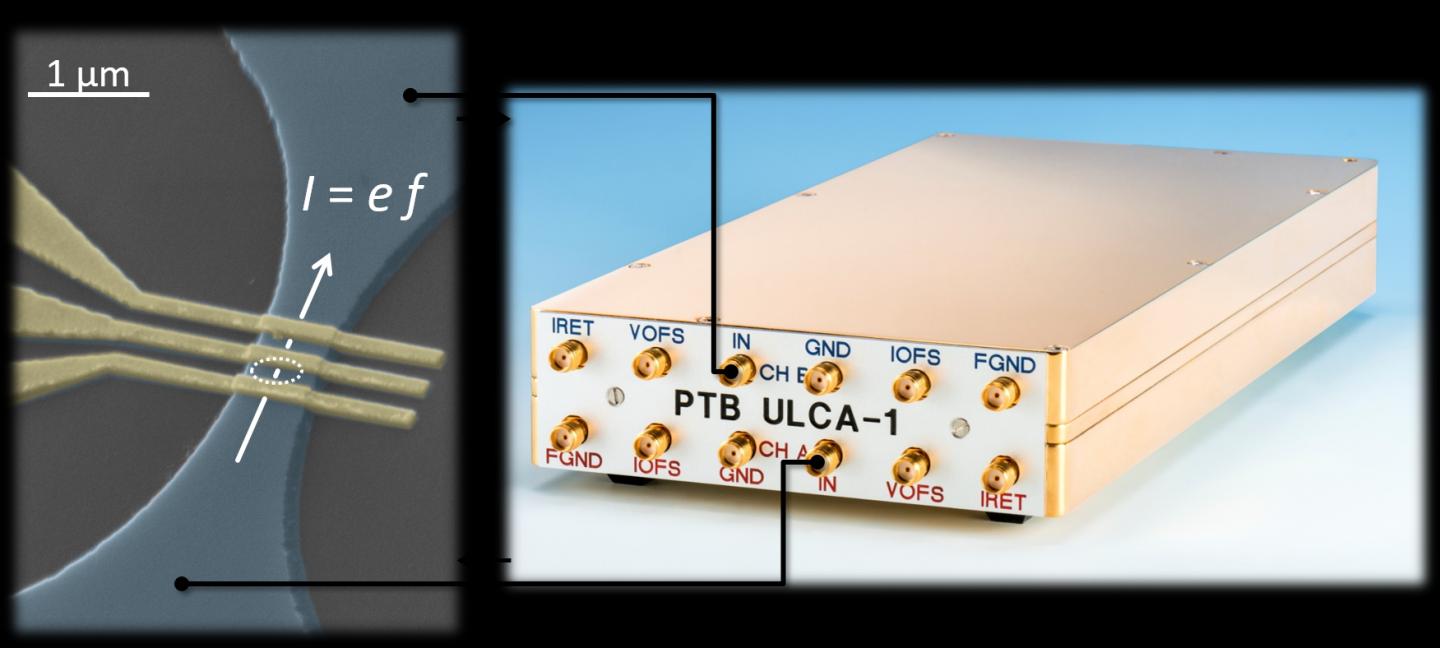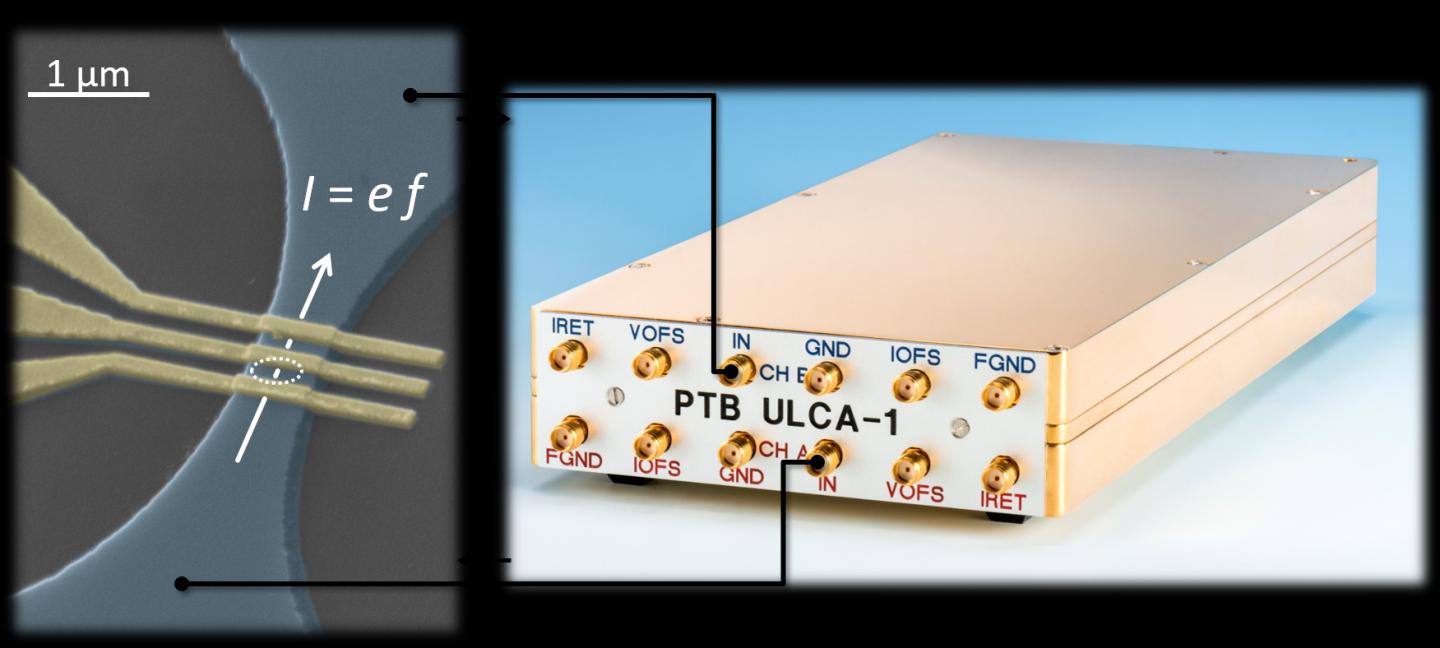
Credit: Source: PTB
The universe of physics is experiencing great changes: by 2018, scientists want to place all physical base units on solid, unchangeable foundation in the form of fundamental constants. The units "meter" and "second" were well ahead of schedule; now the kelvin, the kilogram, the mole and the ampere are next in line. The research activities of the Physikalisch-Technische Bundesanstalt (PTB) are contributing to this project. Scientists from PTB have now succeeded in measuring the extremely small currents of a single-electron pump with unprecedented accuracy. This is a milestone towards the revision of the International System of Units (SI).
The definition of the ampere as it is today is anything but convenient: It is based on a hypothetical test setup which includes, among other things, two conductors of infinite length. In this setup, an ampere would generate a precisely fixed force. This definition is thus closely related to mass, which has been giving physicists serious headaches for a long time given the instability of the international prototype of the kilogram. The current definition of the kilogram sharply limits the precision with which the ampere can be realized. Physicists have therefore decided that the kilogram prototype has become obsolete and will have to "retire" in 2018, and that the fundaments of the SI should, at the same time, be thoroughly revised.
In order to help the ampere take the leap into the realm of fundamental constants, physicists are counting the electrons which flow in a given time through a conducting track that is only a few nanometers wide. This presupposes that they are able to manipulate the electron flow – which they indeed achieve by means of a single-electron pump. It pumps one electron after the other through what can be imagined as a mountain chain from one valley to the next. In this way, it is possible to count the electrons arriving in the "valley", and thus to determine the elementary charge.
The use of single-electron pumps has presented physicists from all around the world with two main challenges: firstly, the pumps only supply very small currents, which are very difficult to measure. Secondly, statistical errors occur during the electron transport, for instance when an electron falls back into the "valley" where it came from or when two electrons are pumped into the same valley. This is detrimental to precision. A solution has already been developed to solve the pumping errors and has been demonstrated with very slow pumps: the physicists connect several pumps in series and between the pumps, special detectors indicate whether too many or too few electrons pass through the valley. It is thus possible to correct errors while the pumps are active.
Now, scientists at PTB have succeeded in developing an innovative technique to also meet the measurement challenge. Thanks to a novel amplifier, researchers are able to amplify the small current produced by the pumps by a factor of approx. 1000. Combined with two other quantum standards, it is then become possible to measure small currents with a level of precision that is unprecedented worldwide.
In their work, PTB's physicists have shown that controlled single-electron pumps provide a considerably more precise realization of the ampere than the conventional ampere definition would allow. "For the time being, the single-electron pump is operated without correction. However, the measurement showed that the errors are indeed so small that the correction method should also work with these fast pumps. This is a real milestone towards the new SI" explains Franz Ahlers, Head of the Electrical Quantum Metrology Department of PTB. There seem to be no obstacles left on the path to the redefinition of the ampere, which is planned for 2018. Since the redefinition will only cause very small changes in the electrical units, the revision of the SI will not be noticeable for most consumers. However, things look slightly different in fields such as micro- and nano-electronics or in medical and environmental metrology. In areas such as these, the new ampere will enable a much more accurate calibration of measuring instruments.
###
Contact at PTB: Dr. Hans Werner Schuhmacher, Head of Department 2.5, "Semiconductor Physics and Magnetism", phone: +49 (0)531 592-2500, e-mail: [email protected]
Dr. Franz Josef Ahlers, Head of Department 2.6, "Electrical Quantum Metrology", Phone: +49 (0)531 592-2600, e-mail: [email protected]
Further information: H. Scherer, U. Siegner. Elektronen zählen, um Strom zu messen. PTB-Mitteilungen 126, 2 (2016), S. 53-61. http://www.ptb.de/cms/fileadmin/internet/publikationen/ptb_mitteilungen/mitt2016/Heft2/PTB-Mitteilungen_2016_Heft_2.pdf
Media Contact
Hans Werner Schumacher
[email protected]
49-053-159-22500
http://www.ptb.de/
############
Story Source: Materials provided by Scienmag





